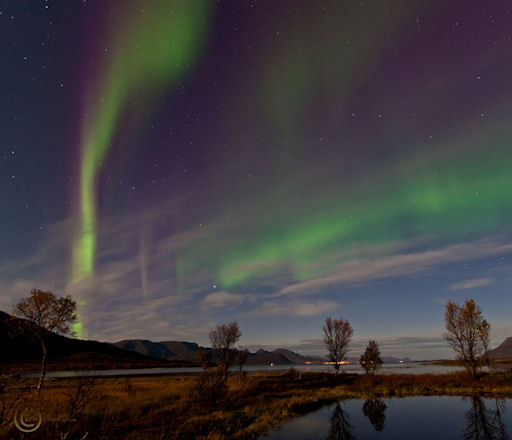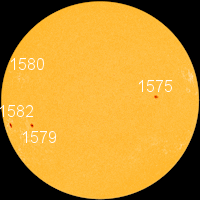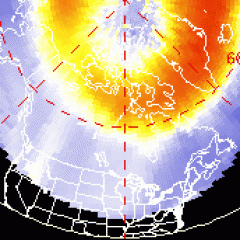SLIGHT CHANCE OF FLARES: NOAA forecasters estimate a 20% chance of M-class solar flares today. The most likely source would be sunspot AR1575, which is facing Earth squarely-enough for geoeffective eruptions. Solar flare alerts: text, voice.
POLAR LIGHTS: A medium-speed (~450 km/s) solar wind stream is brushing against Earth's magnetic field, sparking intermittent auroras around the Arctic Circle. Frank Olsen photographed these colorful streamers over Sortland, Norway, during the early hours of Sept. 27th:
"The auroras shone right through the bright moonlight," says Olsen. "It was a nice [little outburst]."
The display was not caused by a geomagnetic storm, but at this time of year no storm is required. For reasons researchers do not fully understand, equixoxes favor auroras. During the nights of early autumn, even a gentle gust of solar wind can ignite colorful lights at high-latitudes. Browse the gallery for current images:

![]()
Solar wind
speed: 406.5 km/sec
density: 0.0 protons/cm3
explanation | more data
Updated: Today at 1546 UT
![]()
X-ray Solar Flares
6-hr max: B4 0745 UT Sep27
24-hr: B7 0656 UT Sep27
explanation | more data
Updated: Today at: 1459 UT
![]()
![]()
![]()
Daily Sun: 27 Sep 12
![]()
![]()
Sunspot 1575 poses a slight threat for M-class solar flares. Credit: SDO/HMI
![]()
![]()
![]()
Sunspot number: 113
What is the sunspot number?
Updated 27 Sep 2012
Spotless Days
Current Stretch: 0 days
2012 total: 0 days (0%)
2011 total: 2 days (<1%)
2010 total: 51 days (14%)
2009 total: 260 days (71%)
Since 2004: 821 days
Typical Solar Min: 486 days
Update 27 Sep 2012
The Radio Sun
10.7 cm flux: 139 sfu
explanation | more data
Updated 27 Sep 2012
![]()
![]()
![]()
Current Auroral Oval:
![]()
Switch to: Europe, USA, New Zealand, Antarctica
Credit: NOAA/POES
![]()
![]()
![]()
Planetary K-index
Now: Kp= 1 quiet
24-hr max: Kp= 3 quiet
explanation | more data
![]()
Interplanetary Mag. Field
Btotal: 3.6 nT
Bz: 0.9 nT south
explanation | more data
Updated: Today at 1546 UT
![]()
![]()
![]()
Coronal Holes: 27 Sep 12
![]()
![]()
There are no large coronal holes on the Earth side of the sun. Credit: SDO/AIA.





